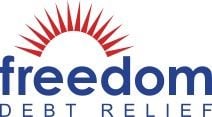Debt Management vs. Debt Settlement: Which Is Better?

Many, or all, of the products featured on this page are from our advertising partners who compensate us when you take certain actions on our website or click to take an action on their website. However, this does not influence our evaluations. Our opinions are our own. Here is a list of our partners and here's how we make money.
If you’re struggling to get out of debt, you might be considering debt management or debt settlement as a solution.
These two options sound similar, but they're very different. While both can offer a pathway out of debt, debt management tends to be less risky than debt settlement. Learn more about how debt management and debt settlement work and when each may make sense for you.
What is debt management?
Debt management refers to a debt management plan offered by a credit counseling agency. These plans mostly cover credit card debt and roll multiple credit card balances into one with a single monthly payment at a lower interest rate. This simplifies your debt and saves money.
Debt management plans typically last three to five years, and you can’t use your credit cards or open new lines of credit while on the plan. Some debt management plans may require you to close any credit cards that are part of the plan.
You can sign up for a debt management plan through a reputable, nonprofit credit counseling agency. This won’t hurt your credit score.
AD
When to consider debt management
You’re looking to get rid of unsecured debt, like credit cards: Debt management plans don’t cover debts like auto loans, mortgages or student loans, but if credit cards are your main source of debt, a debt management plan can help you pay down your balances.
You can’t qualify for other options: Other debt payoff tools, like balance transfer cards, can help you pay off credit card debt, but they’re only available to borrowers with good credit (690 score or higher). Debt management plans don’t have a minimum credit score requirement.
You can afford the fees: Debt management plans may require an initial setup fee and a monthly maintenance fee. These fees vary by agency, but can range from $20 to $75.
You can commit to years of payments: Debt management plans aren’t quick fixes and may last three years or more, so you’ll need to consider whether you can keep up with payments for the duration of the plan.
You want the external discipline of a plan: Since you may be required to close your credit cards as part of entering a debt management plan, it can help you from spiraling further into debt. You also won’t be able to open any new credit cards while on the plan.
What is debt settlement?
Debt settlement is when you settle a debt for less than what you owe, usually with the help of a third-party, like a for-profit debt settlement company.
A debt settlement company will advise you to stop making payments on your debts and funnel the money into an escrow account. As your debt grows more delinquent, the company negotiates with the creditor to accept a smaller amount. The hope is that the creditor figures a lesser payment is better than none. Most debt settlement companies charge a fee of 15% to 25% of the amount you owe for each successful settlement.
But debt settlement comes with big downsides: Your credit score may tank, and there’s no guarantee your creditor will accept the offer.
When to consider debt settlement
You have a mix of unsecured debt: Debt settlement companies can settle unsecured debts, like credit cards, medical bills or personal loans. Debt settlement doesn’t address secured debt, like an auto loan or mortgage.
You’re certain you can’t repay what you owe: It’s better to explore other debt payoff options (more on those lower down) before hiring a for-profit settlement company. But if you’re sure you can never pay back your debt in full, settlement may offer relief.
You’re willing to take the credit hit: Missing payments on your debts and settling a debt both hurt your credit score. Still, paying something is better than paying nothing at all, so settlement may be worth the ding to your credit if there’s no alternative.
You can stomach uncertainty: It may take a few years to successfully settle your debts, and even then, there’s no guarantee your creditors will accept a debt settlement offer. Some creditors may refuse to work with a debt settlement company.
Debt management vs. debt settlement
Debt management | Debt settlement | |
|---|---|---|
Best for: | Unsecured debt, including credit card debt. | Unsecured debt, including credit card debt. |
Credit score impact: | Signing up for a debt management plan won’t hurt your credit score. | Missing payments and settling debts can hurt your credit score. |
Cost: | Initial setup fee and monthly fees from $20 to $75. | Settlement fee ranging from 15% to 25% of the amount owed. Other fees may apply. |
Timeline: | Three to five years. | Varies, but can take up to four years. |
Other risks: | You won’t be able to open new lines of credit or use your credit cards while on the plan. | Not all creditors work with debt settlement companies or accept debt settlement offers. |
Other ways to get debt relief
Debt management and debt settlement aren’t the only ways to get out of debt. Consider all your options before making a decision.
DIY debt payoff
Depending on how much debt you have, you may be able to address it on your own. There are two main strategies for paying down debt: the avalanche method and the snowball method.
With the avalanche method, you pay down the debt with the highest interest rate first and then work your way down, applying your savings in interest to each consecutive debt. With the snowball method, you pay down your smallest debt first and then work your way up, building momentum as you go.
However, if your debts will take more than five years to repay, it’s best to consider other options.
Debt consolidation
Debt consolidation rolls multiple debts into one, ideally at a lower interest rate. There are two main tools for consolidating your debts: Balance-transfer cards and debt consolidation loans.
With a balance transfer card, you transfer your existing credit card balances onto a 0% balance-transfer card, and then pay down the balance during the promotional period — typically a year or more. Once the promotional period is over, you’ll pay the regular annual percentage rate. Balance-transfer cards are only available to borrowers with good or excellent credit.
With a debt consolidation loan, you apply for a personal loan and use the funds to pay off unsecured debts. You then pay back the loan at a fixed rate, typically over two to seven years. Borrowers across the credit spectrum can get a consolidation loan, though borrowers with bad credit may have more luck with online lenders and credit unions.
Bankruptcy
If your debt exceeds 40% of your income and you can’t pay it off within five years, bankruptcy may be an option. Bankruptcy can wipe out unsecured debts or help you enter a repayment plan with better terms. It also can stop debt collection calls, debt lawsuits and wage garnishment. The process is complicated though, so you’ll want to consult a bankruptcy attorney.



